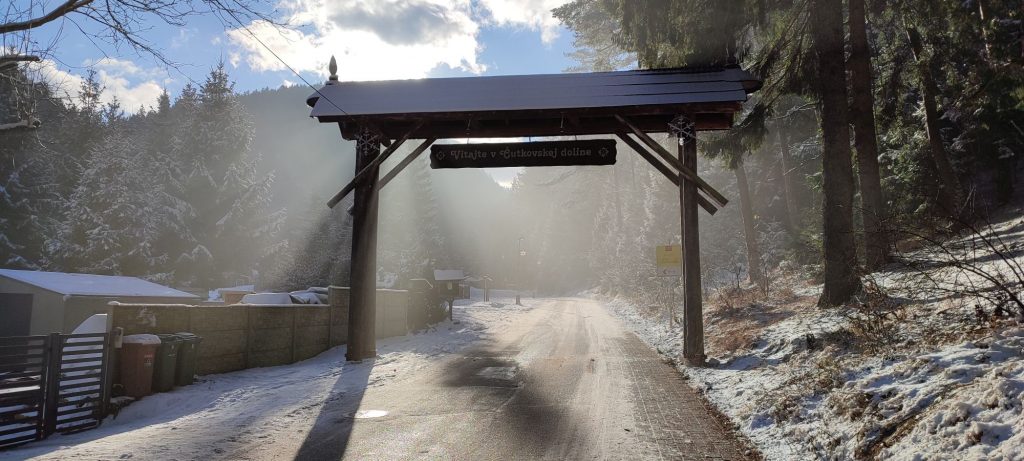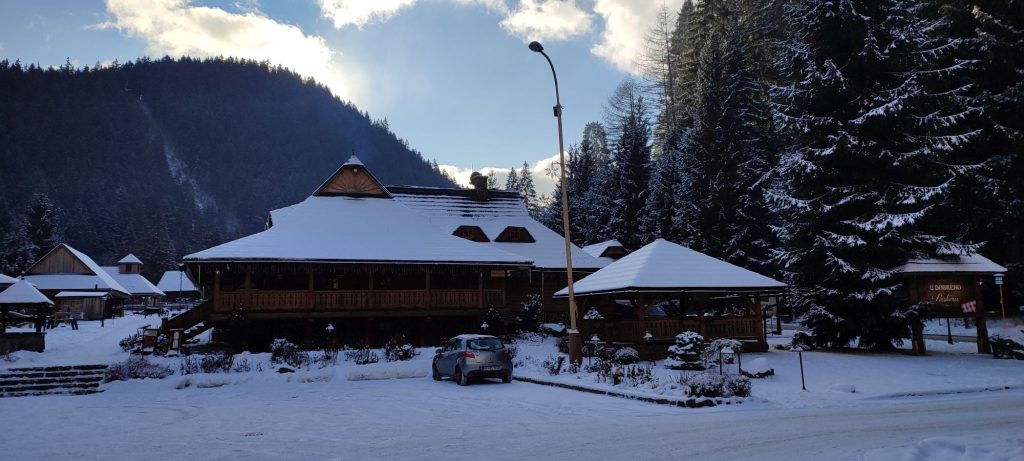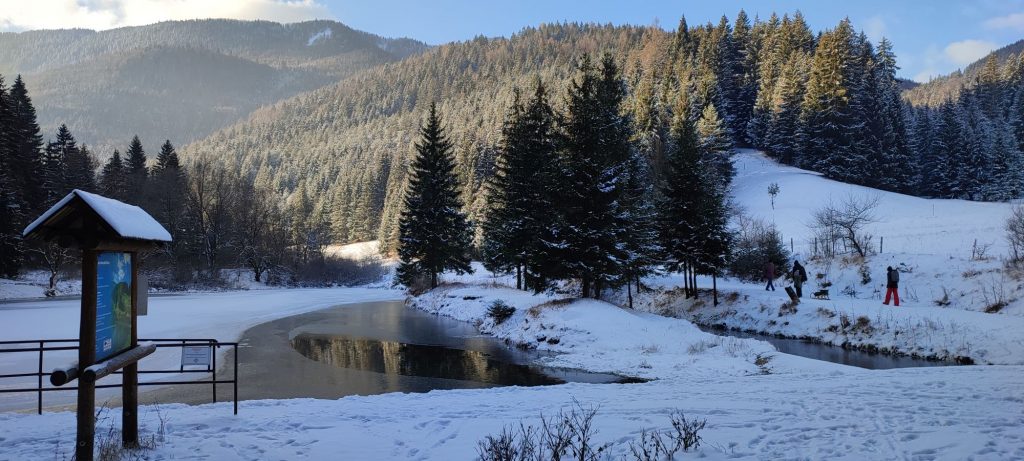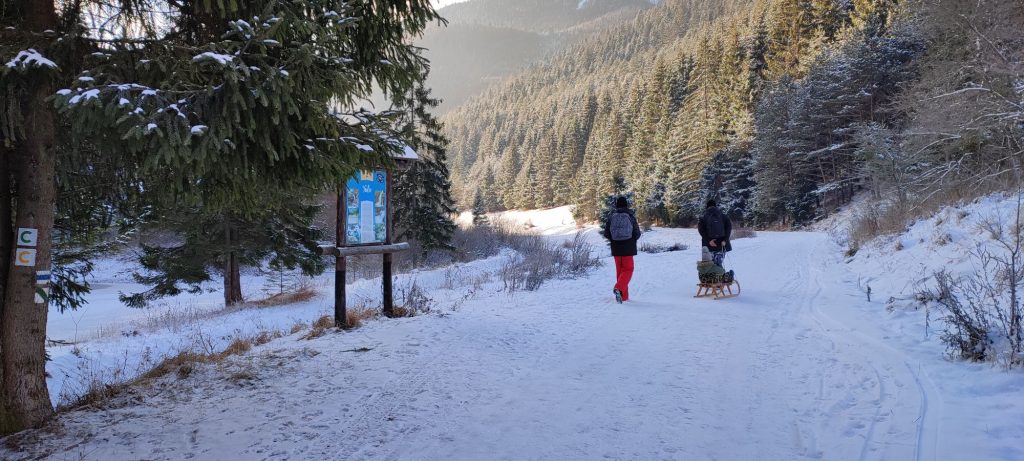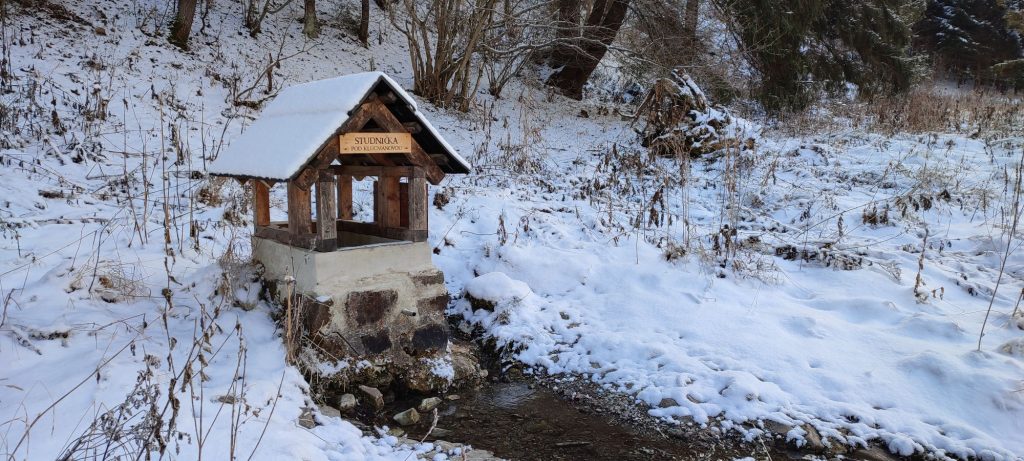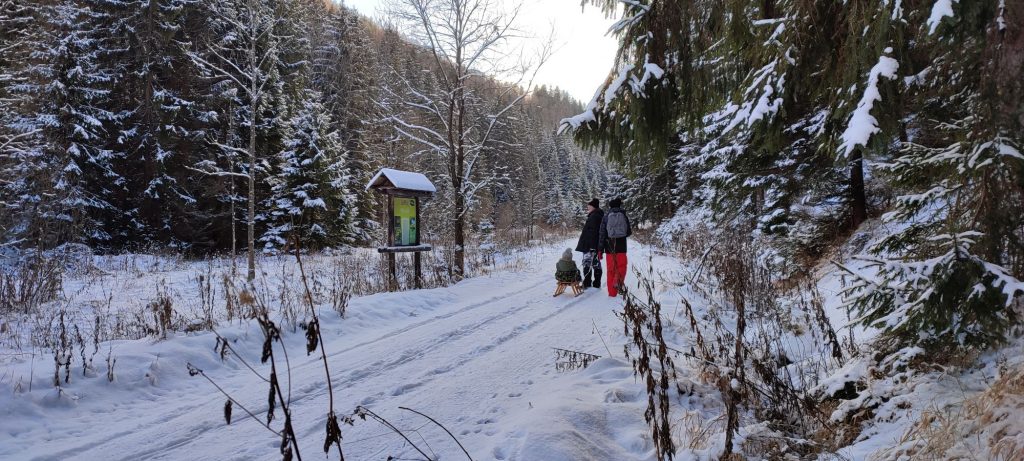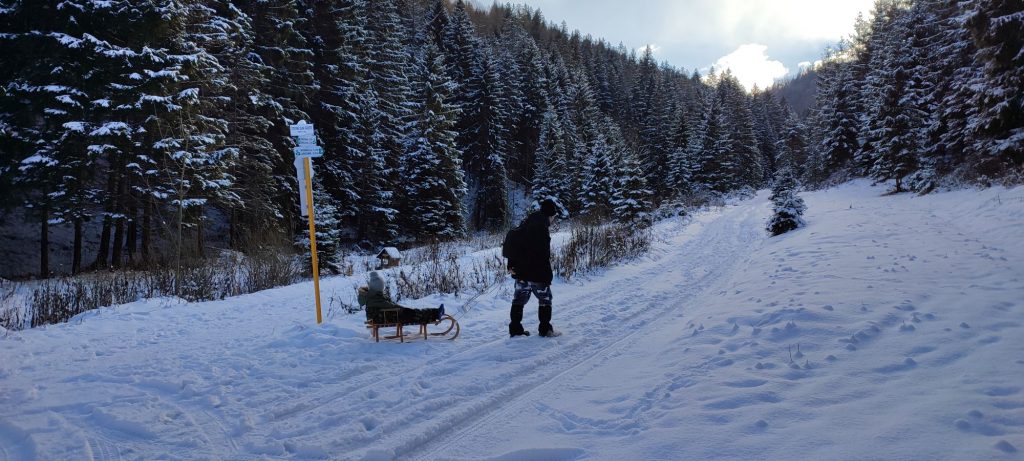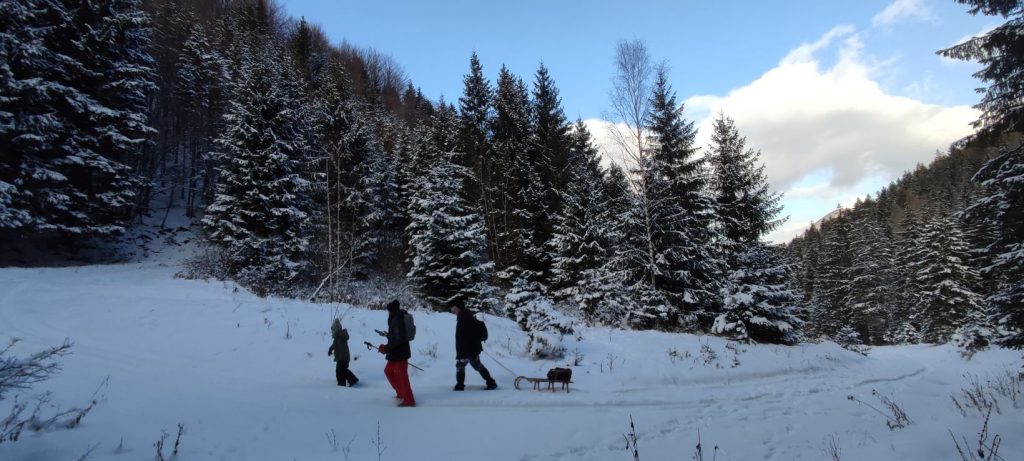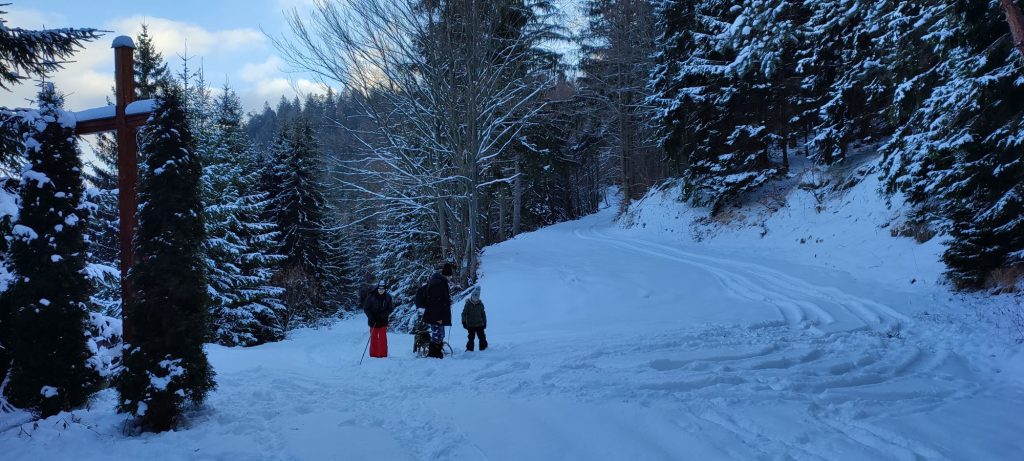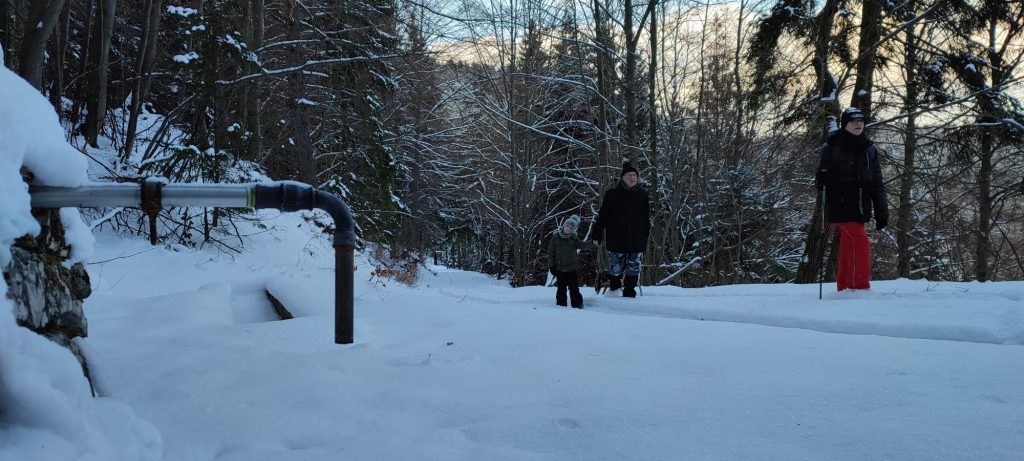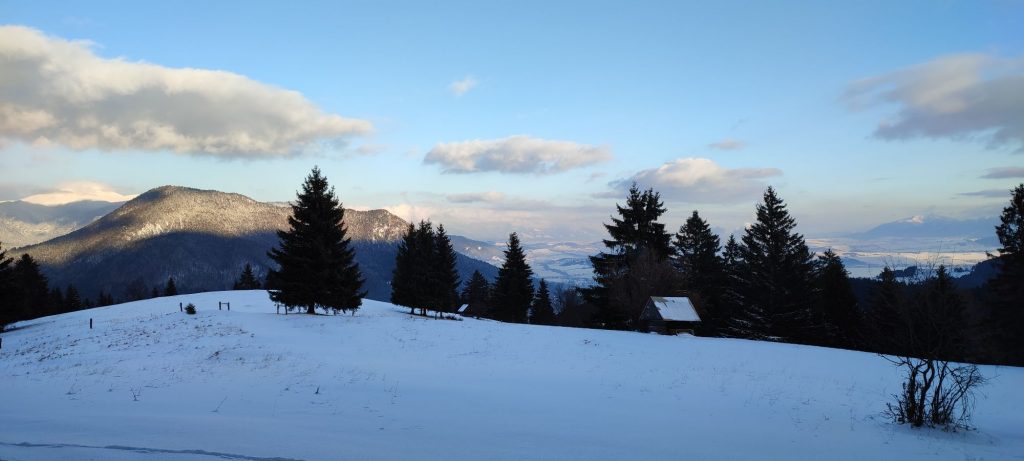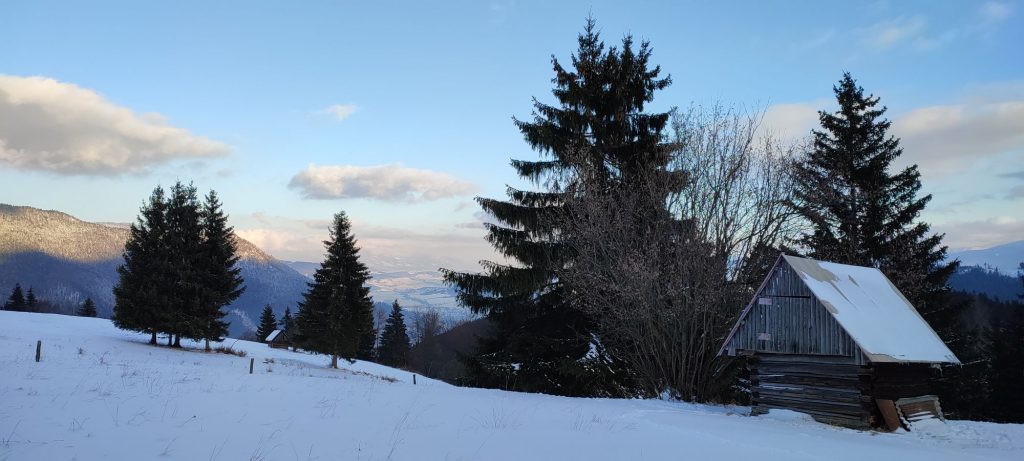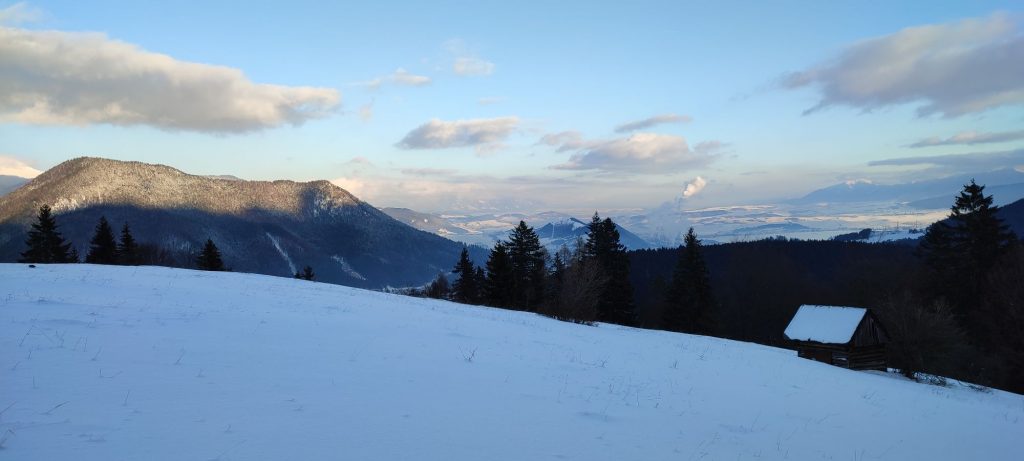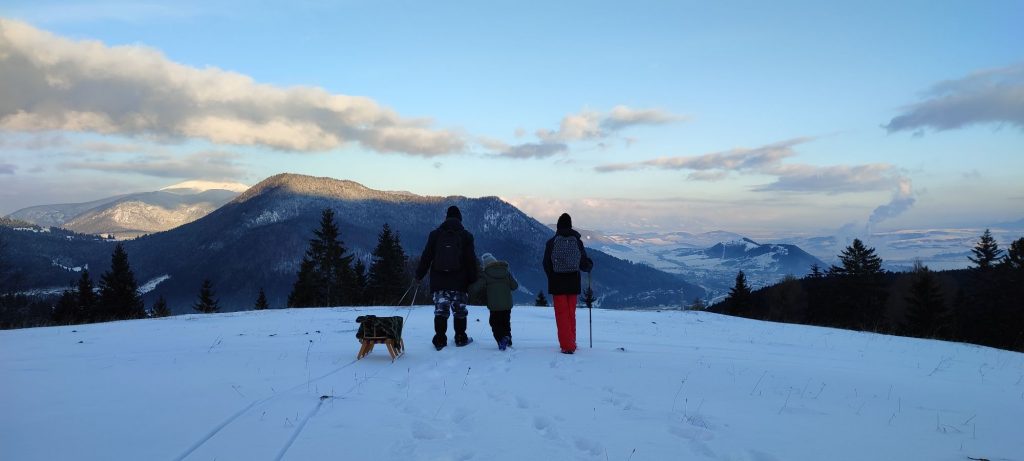Nature as Therapy: To Dedov
The last trip of 2021 will take us to a meadow with a view, called Dedov, which is situated above the Čutkovská Valley, below peak Tlstá Hora, or Krstá Hora, as it is called by the inhabitants of Černová. In the woods above Černová, there are many meadows which used to be cultivated in the past. It is evidenced in the numerous buildings of stalls (hay barns), which are situated here. The reason we decided for Dedov is that it is easily accessible and you can get there safely even in winter, when there is a large amount of snow.
Our route begins in Ružomberok’s district Černová, at bus stop “Čutkovská dolina“, to which we can get by buses of the Ružomberok public transport system. From the bus stop, we walk along the “Čremošná” Street, which will lead us to complex “U dobrého pastiera” situated at the beginning of the Čutkovská Valley. At the complex, you will find a shepherd’s hut – restaurant, a brewery, a barn with animals and many other attractions, which, however, we will leave for the way back, as this trip is a bit longer and we need to pass almost ten kilometres to get there and back. From the complex, we continue on the road to the valley, where we pass by a dam, educational panels and wells, which are situated near the road, and we come to a bike trail signpost. From the signpost, we continue slightly to the right, on the road with the green-marked bike trail leading to Ľubochňa. After a few dozen metres, the road curves sharply back and leads us mildly uphill through a wooded area, to an intersection with a cross and a bench. We can use the bench to take a break, as the majority of the route is behind us and what is left is only the final section. By the cross, we leave the bike trail and we continue to the left, to the road with the red-marked hiking trail running through Tlstá Hora, to Podsuchá. We pass by a well, which is a discharge from a water tower situated a few metres farther uphill. However, during winter, the water is usually shut down, and in summer, whether the water flows or not depends on the condition of the water in the water tower. A bit farther uphill from the well, we arrive at an intersection of forest roads. From the intersection, we continue to the left and we are leaving the marked trail. In winter, our route is usually trodden up to this point, as it is walked by hikers. The final section is normally not trodden in winter, which makes it a bit more difficult to pass through, if there is a large amount of snow. Fortunately, this section is approximately 400 metres long and the ascent is mild. Gradually, you can start seeing the meadow which is our destination, showing through the trees to the left of the road. We continue on the road, moving to its right periphery, where we will see a passageway from the road to the meadow. At the meadow, we can admire old stalls, which are still used for storage of hay, and the view of the surroundings, which is the reason why we chose this location. We can admire the Liptov Basin and the surrounding mountains. There was some cloudiness during our trip, which covered up the peaks higher than 1500 metres, but we were very pleased with the view nevertheless. To return, we use the same route, which is safe, or we continue straight ahead on the meadow, passing by the stalls, to a path which will lead us through a steep and slippery slope, to the road on which we came here.
Hiking in snow-covered woodland makes us realize how difficult the winter is for woodland animals. That is why whenever it is really cold outside and there is a lot of snow, we should not forget about them. We can, for example, help the birds by bringing some seeds to the woods, which need to be placed in such way that they will not be covered by snow and that the birds will be able to access them. However, we also need to keep in mind that by bringing seeds to a wooded area, we may also bring things which do not belong there. For example, the tallow for birds, which you can buy in a store, is often wrapped in a plastic net, which we should come for and take back after winter. In spring, when we return for the net from the tallow or other sticks or hooks from the bird feed, if we also find other things which do not belong there, instead of leaving them there without care, we take them with us, because we explore our surroundings in a mindful and sustainable way, in accordance with the idea of #ObjavUdržateľnéSlovensko (DiscoverSustainableSlovakia).
We believe that this year’s fifteen trips motivated you to visit interesting locations situated in the surroundings of Ružomberok. We are also pleased that you also pitched in and helped nature by carrying away with you what does not belong there. On our trips to these places, we were able to carry away a lot of litter, but also herbs and plants, which we are already using and will be using until the next season, when we will go forage new rose hips, cowslip, coltsfoot, wild thyme, linden flowers, nettle, wild marjoram (oregano), agrimony, hypericum (dotted St. John’s wort) and other gifts of nature.
The text was prepared by Milan Kolčák and Ján Benčík from the Ružomberok Information Centre.
This is the fifteenth article of the article series with subtitle Nature as Therapy.
Published: 30.12.2021

